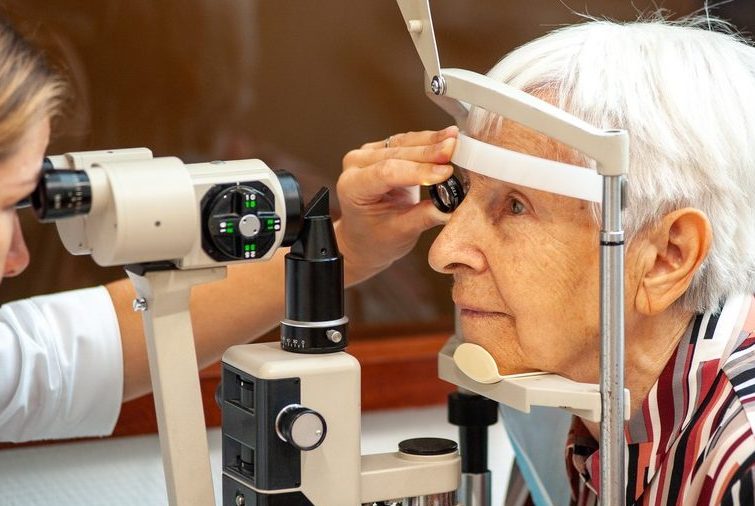Regular eye tests are essential for maintaining healthy vision and detecting eye conditions early. Many people assume they only need an eye exam when their vision worsens, but routine eye checkups can uncover hidden problems before they become serious.
So, how often should you book an eye test? The answer depends on age, medical history, and risk factors. This guide will explain the importance of regular eye tests, recommended checkup frequency, and signs that indicate you need an exam sooner.
Why Are Regular Eye Tests Important?
Many eye conditions develop gradually and painlessly, meaning symptoms might not appear until the disease has progressed. Routine eye exams help:
Detect Vision Changes Early – Your eyesight may change slowly, making it hard to notice. Regular tests ensure your prescription is correct.
Prevent Eye Diseases – Conditions like glaucoma, cataracts, and macular degeneration can be detected and treated before they cause vision loss.
Monitor Overall Health – Eye exams can reveal diabetes, high blood pressure, and even neurological conditionslike brain tumors.
Skipping regular eye tests can lead to undiagnosed issues, impacting not only vision but also overall health.
How Often Should You Have an Eye Test?
The recommended frequency of eye exams varies based on age, lifestyle, and risk factors:
Children (Up to 16 Years Old)
- Every year or as recommended by an optometrist.
- Eye health is crucial for learning and development—poor vision can affect reading, writing, and concentration.
- Conditions like lazy eye (amblyopia) and squint (strabismus) are easier to correct if diagnosed early.
Adults (17-39 Years Old)
- Every two years, unless symptoms arise.
- If you experience headaches, blurred vision, or eye strain, book an appointment earlier.
- Screen-heavy lifestyles (computers, smartphones) can lead to digital eye strain, increasing the need for eye exams.
Adults Over 40
- Every two years, or annually if you have risk factors.
- Age-related vision changes like presbyopia (difficulty seeing up close) often start after 40.
- Conditions such as glaucoma and macular degeneration become more common with age.
People with High-Risk Factors
- Annually or as recommended by an optometrist.
- High-risk individuals include:
- Diabetics (higher risk of diabetic retinopathy).
- Those with a family history of eye disease.
- People with high blood pressure (linked to retinal issues).
- Individuals with previous eye injuries or surgeries.
Seniors (60+ Years Old)
- Every year to monitor age-related conditions.
- Eye diseases like glaucoma, cataracts, and macular degeneration increase with age.
- Regular tests ensure early detection and management.
Signs You Need an Eye Test Sooner
Even if you’re not due for an eye test, certain symptoms indicate it’s time to see an optometrist:
Blurry or double vision
Frequent headaches, especially after reading or screen use
Difficulty seeing at night or increased sensitivity to light
Eye strain, tired eyes, or dryness
Squinting or struggling to read small print
Seeing floaters, flashes, or dark spots
Ignoring these signs can lead to long-term vision issues, so it’s best to schedule an appointment as soon as possible.
What to Expect During an Eye Test
A comprehensive eye exam at Kind Sight includes:
Vision Check – Tests for short-sightedness (myopia), long-sightedness (hyperopia), and astigmatism to determine your prescription.
Eye Health Evaluation – Examines the retina, optic nerve, and cornea to detect conditions like glaucoma, cataracts, and diabetic retinopathy.
Prescription Review – Ensures your glasses or contact lenses provide the correct vision correction.
Digital Eye Strain Assessment – If you spend long hours on screens, your optometrist may suggest blue-light blocking lenses or workplace adjustments.
Routine tests are quick, painless, and play a crucial role in maintaining eye health.
How to Maintain Healthy Vision Between Eye Tests
To keep your eyes healthy between appointments, follow these eye care tips:
Stay Hydrated – Drink plenty of water to prevent dry eyes.
Eat a Balanced Diet – Foods rich in Omega-3, Vitamin A, and Lutein support eye health.
Wear Sunglasses – Protect against UV rays to reduce the risk of cataracts.
Take Screen Breaks – Follow the 20-20-20 rule (every 20 minutes, look at something 20 feet away for 20 seconds).
Avoid Rubbing Your Eyes – Reduces the risk of infection and irritation.
Book Your Next Eye Test at Kind Sight
Your vision is priceless—don’t wait for symptoms to appear before prioritizing your eye health. Regular eye tests help maintain clear sight, detect problems early, and enhance your quality of life.
Is it time for your next eye test? Visit Kind Sight today to book an appointment and keep your eyes healthy for years to come!
Final Thoughts
Regular eye exams are essential at every stage of life. From childhood to old age, maintaining a consistent eye care routine can prevent long-term vision issues and detect serious health conditions.


